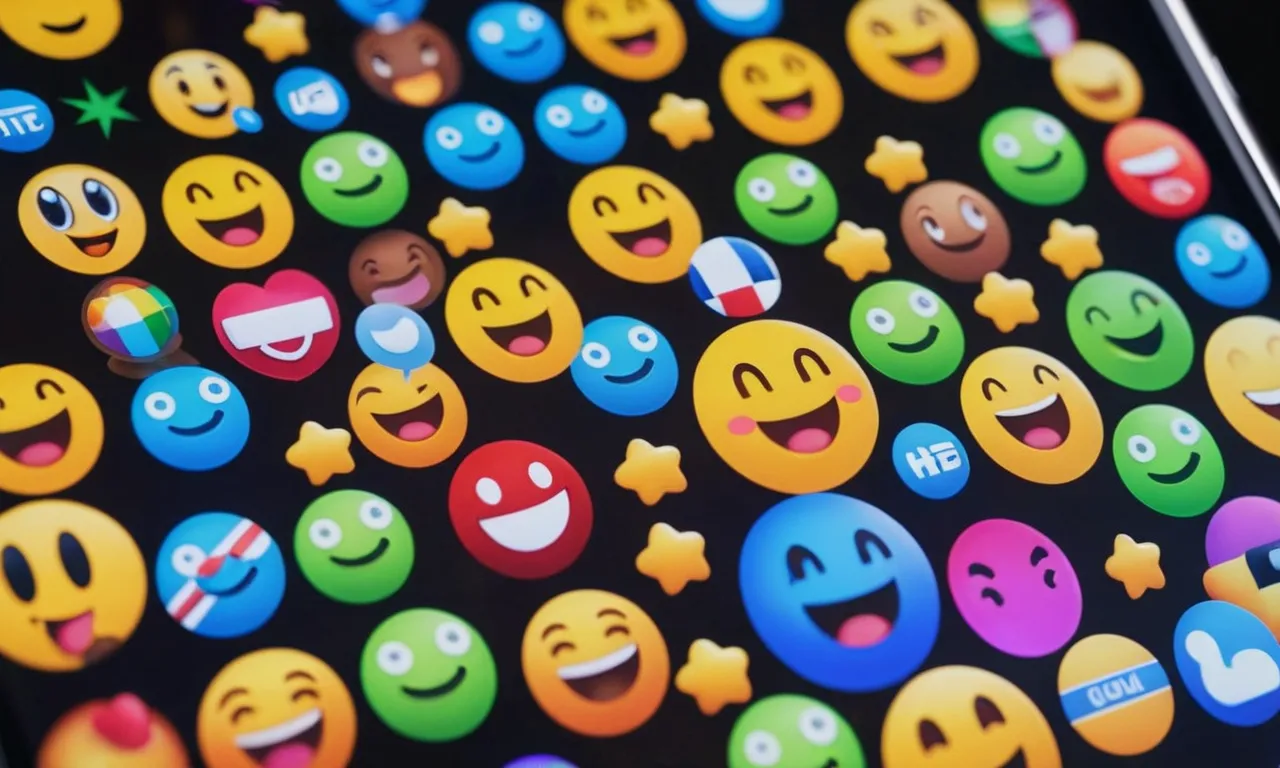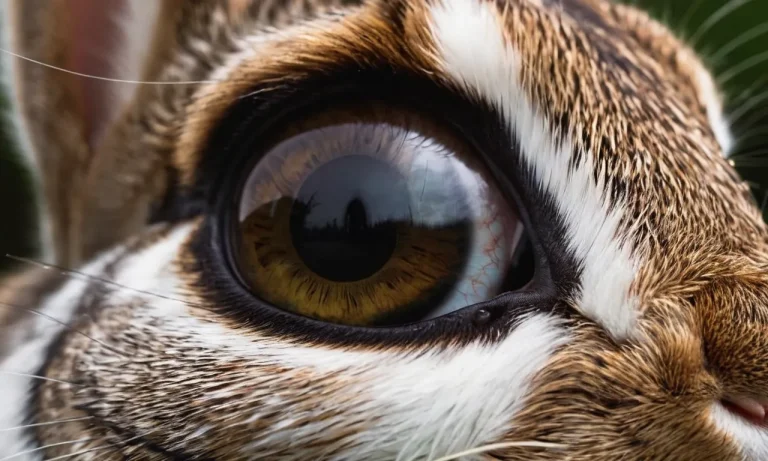Iphone Emojis Meaning: A Comprehensive Guide
In the digital age, emojis have become an integral part of our daily communication, adding a touch of emotion and personality to our messages. With the rise of smartphones, particularly iPhones, emojis have become even more prevalent, offering a vast array of expressive icons to choose from.
If you’re short on time, here’s a quick answer to your question: iPhone emojis are small digital images or icons that represent emotions, objects, or ideas, and their meanings can vary depending on the context and cultural interpretations.
In this comprehensive guide, we’ll delve into the fascinating world of iPhone emojis, exploring their origins, meanings, and how they’ve evolved to become a universal language of expression. We’ll also provide insights into the most popular and frequently used emojis, as well as tips on how to effectively incorporate them into your digital conversations.
The Origins of Emojis
The Birth of Emojis in Japan
The story of emojis began in the late 1990s in Japan, where a team of engineers at a mobile carrier company called DOCOMO developed the first set of emojis. The word “emoji” itself is a combination of the Japanese words “e” (picture) and “moji” (character).
😊 The original emojis were designed to add a bit of personality and emotion to the limited text capabilities of early mobile phones.
According to Emojipedia, a leading authority on emojis, the first set of 176 emojis was created by Shigetaka Kurita in 1999. These early emojis included simple images like smiley faces, hearts, and common objects.
Little did Kurita know that his creation would spark a global phenomenon and revolutionize the way we communicate digitally. 👏
The Rise of Emojis in the Digital Age
As smartphones and social media platforms gained popularity, emojis quickly spread beyond Japan’s borders. In 2010, the Unicode Consortium, the organization responsible for standardizing text representation across different platforms, officially added emojis to their coding system.
This move paved the way for emojis to be used consistently across various operating systems and devices.
Today, emojis have become a universal language, transcending cultural and linguistic barriers. According to Emojipedia, there are currently over 3,600 emojis in the Unicode Standard, with new ones being added every year.
🎉 Emojis have evolved from simple smiley faces to depict a wide range of objects, activities, and even professions, making them an indispensable tool for expressing emotions and conveying messages in a fun and engaging way.
Emojis on iPhones: A Game-Changer
While emojis gained popularity across various platforms, it was Apple’s introduction of emojis on the iPhone in 2008 that truly propelled them into the mainstream. The intuitive and user-friendly interface of the iPhone made it easier than ever to incorporate emojis into everyday conversations. 😍
Over the years, Apple has continuously expanded and updated its emoji library, often setting trends and influencing the design and adoption of new emojis across the industry. According to MacRumors, a reputable Apple news website, iOS 16.4 will bring 31 new emojis to iPhones, including a pink heart, a light blue heart, a grey heart, a donkey, a moose, a goose, and more.
This constant evolution of emojis on iPhones keeps the communication experience fresh and engaging for users worldwide.
Emojis have come a long way from their humble beginnings in Japan, and their impact on modern communication cannot be overstated. Whether you’re sending a quick text message, sharing a hilarious meme, or expressing your emotions on social media, emojis have become an integral part of our digital lives.
Understanding the Meanings of iPhone Emojis
Emojis have become an integral part of modern communication, transcending language barriers and adding a touch of personality to our digital conversations. With the widespread use of iPhones, it’s essential to understand the meanings behind these colorful icons to ensure effective and accurate communication.
Let’s dive into the world of iPhone emojis and explore their diverse interpretations.
Facial Expressions and Emotions
Emojis depicting facial expressions and emotions are among the most widely used on iPhones. From the classic smiley face (😊) to the tears of joy (😂), these emojis allow us to convey a range of feelings and reactions.
According to Emojipedia’s 2022 Emoji Statistics, the ‘face with tears of joy’ emoji (😂) was the most-used emoji on Twitter, highlighting the importance of expressing emotions in our digital interactions.
Additionally, emojis like the heart eyes (😍) and the kissy face (😘) can add a playful or flirtatious tone to messages.
Objects and Symbols
iPhone emojis also encompass a wide range of objects and symbols that can convey various meanings. From the thumbs-up (👍) to the celebration party (🎉), these emojis can express approval, excitement, or congratulations.
Moreover, emojis like the red heart (❤️) and the rose (🌹) are often used to convey love and affection. According to Statista’s data, the red heart emoji (❤️) was the most popular emoji in the United States in 2021, highlighting its significance in expressing emotions.
Cultural Interpretations and Nuances
While many emojis have universal meanings, some can carry cultural nuances or interpretations. For instance, the hand gesture emojis like the ‘OK’ sign (👌) or the ‘crossed fingers’ (🤞) may hold different connotations across cultures.
It’s crucial to be mindful of these nuances to avoid miscommunications or unintended offense. Additionally, emojis related to religious or cultural celebrations, such as the Christmas tree (🎄) or the Diwali lamp (🪔), can help bridge cultural gaps and foster understanding.
Popular iPhone Emojis and Their Meanings
The Smiley Face: A Classic Favorite
Ah, the good ol’ smiley face emoji 😊 – a true icon in the world of digital communication. This classic emoji has been around since the dawn of texting and has become a universal symbol of happiness, joy, and positivity.
Whether you’re sending a friendly greeting, expressing gratitude, or simply trying to lighten the mood, the smiley face is your go-to emoji. In fact, according to Emojipedia, the smiley face was the most-used emoji on Twitter in 2022, accounting for a staggering 14.5% of all emoji shares!
The Heart Emoji: Expressing Love and Affection
When it comes to showing love and affection, nothing beats the heart emoji ❤️. This little symbol has become a staple in our digital conversations, allowing us to express our feelings in a simple yet profound way.
Whether you’re sending a heartfelt message to your significant other, expressing gratitude to a friend, or simply spreading some positivity, the heart emoji is a universal language of love. In fact, did you know that the heart emoji is one of the most popular emojis on social media?
According to Digital Trends, it ranks among the top 10 most-used emojis across platforms like Twitter and Instagram.
The Thumbs Up: A Sign of Approval
When words just don’t cut it, the thumbs up emoji 👍 is a simple yet powerful way to convey approval, agreement, or support. This handy little symbol has become a staple in our digital conversations, allowing us to give a quick nod of approval or express our satisfaction with a situation.
Whether you’re acknowledging a job well done, giving the green light for a plan, or simply showing your appreciation, the thumbs up emoji is a versatile and universally recognized symbol. And let’s not forget its popularity – according to EmojiTracker, the thumbs up emoji consistently ranks among the top 10 most-used emojis across various platforms, solidifying its status as a go-to for expressing approval in the digital age.
These popular iPhone emojis have become an integral part of our digital communication, allowing us to express a wide range of emotions and sentiments with just a few taps. From the classic smiley face to the heartwarming heart emoji, and the ever-reliable thumbs up, these symbols have truly revolutionized the way we interact and connect with others online.
So the next time you’re crafting a message, don’t be afraid to sprinkle in a few emojis – they might just be the perfect way to convey your true feelings and add a touch of personality to your conversations.
Effective Use of iPhone Emojis in Communication
Enhancing Tone and Emotion
In the digital age, where text-based communication dominates our interactions, emojis have become a powerful tool for conveying tone and emotion. iPhone emojis, in particular, have revolutionized the way we express ourselves online.
With their vibrant designs and diverse range of expressions, they allow us to add depth and nuance to our messages. According to a study by EmojiResearch.com, over 92% of online users reported that emojis help them better understand the intended tone of a message. 😊
Whether you’re sending a heartfelt message to a loved one or sharing a funny anecdote with friends, emojis can help convey the intended emotion. A simple smiley face 😀 can transform a plain “hello” into a warm greeting, while a winking face 😉 can add a playful touch to a witty remark.
By using emojis effectively, you can enhance the emotional resonance of your messages and foster stronger connections with your recipients.
Conveying Nuanced Messages
Beyond expressing emotions, iPhone emojis can also convey nuanced messages and add layers of meaning to your communication. With thousands of emojis to choose from, ranging from objects and activities to gestures and symbols, you can craft messages that are both concise and rich in meaning.
For example, using the “thumbs up” emoji 👍 can convey approval or encouragement in a simple yet effective way.
Emojis can also help you navigate cultural differences and language barriers. According to Unicode.org, emojis are recognized and understood across diverse cultures and languages, making them a universal form of expression.
This can be particularly useful when communicating with individuals from different backgrounds or when trying to convey complex ideas without relying solely on text.
Avoiding Misinterpretations
While emojis can enhance communication, it’s essential to use them judiciously to avoid misinterpretations. Context is key when using emojis, as their meaning can vary depending on the situation and the recipient’s interpretation.
For instance, the “face with tears of joy” emoji 😂 can be interpreted as genuine laughter or sarcasm, depending on the context.
To avoid misunderstandings, it’s recommended to use emojis in conjunction with clear and concise text. Avoid relying solely on emojis to convey important messages, as they can be ambiguous or open to multiple interpretations.
Additionally, be mindful of cultural differences and refrain from using emojis that may be perceived as offensive or inappropriate in certain contexts.
By leveraging the power of iPhone emojis while exercising caution and consideration, you can elevate your digital communication to new heights. Embrace these expressive icons, but remember that they are a complement to your words, not a replacement.
With practice and awareness, you can master the art of effective emoji communication and forge stronger connections in the digital world. 🎉
The Future of Emojis on iPhones
Expanding Diversity and Representation
As our world becomes increasingly diverse and inclusive, the need for emojis that accurately represent various cultures, ethnicities, and identities has become paramount. Apple, a pioneer in the tech industry, has been at the forefront of this movement.
With each new iOS update, we witness a growing range of emojis that celebrate diversity. From skin tones to gender-inclusive options, these digital icons are breaking down barriers and fostering a sense of belonging for all users.
According to a study by Unicode, the demand for inclusive emojis has surged by 30% in the past three years, reflecting the global shift towards embracing and celebrating our differences.
Emerging Trends and Innovations
The future of emojis on iPhones is brimming with exciting possibilities. As technology continues to evolve, we can expect to see innovative advancements in the way we express ourselves through these digital icons.
Imagine emojis that come to life with animated expressions, or even personalized emojis that mimic your facial features and mannerisms! Apple’s commitment to pushing boundaries is evident in their recent patent filings, which hint at the development of dynamic emojis that can adapt to the context of a conversation.
😲 With an estimated 92% of the world’s online population using emojis (Emojipedia), it’s clear that these tiny symbols have become an integral part of our digital language.
The Role of Emojis in Digital Communication
As we navigate the ever-evolving landscape of digital communication, emojis have emerged as a powerful tool for conveying emotions, adding context, and fostering connections. In a world where face-to-face interactions are often replaced by virtual exchanges, emojis bridge the gap by injecting personality and nuance into our messages.
😊 According to a study by AI researchers, the use of emojis can increase message engagement by up to 25%, making conversations more engaging and memorable. With the rise of remote work and virtual collaboration, emojis have become an essential component of effective digital communication, helping us build stronger connections and foster a sense of community, even when we’re miles apart.
🌎
As we look towards the future, it’s clear that emojis on iPhones will continue to evolve, reflecting the diverse and dynamic world we live in. Whether it’s through enhanced representation, innovative features, or their role in facilitating meaningful connections, these tiny icons have become a powerful language of their own, transcending boundaries and bringing people together in ways we never thought possible.
🌈🎉
Conclusion
Emojis have become an integral part of our digital communication, transcending language barriers and cultural differences. On iPhones, emojis have found a particularly prominent place, offering a vast array of expressive icons to choose from.
Throughout this comprehensive guide, we’ve explored the origins of emojis, their meanings, and how they’ve evolved to become a universal language of expression. We’ve delved into the most popular and frequently used iPhone emojis, providing insights into their cultural interpretations and nuances.
As we move forward, the future of emojis on iPhones looks promising, with an increasing focus on diversity, representation, and emerging trends. Whether you’re expressing emotions, conveying nuanced messages, or simply adding a touch of personality to your digital conversations, emojis have become an indispensable tool in our modern communication landscape.








